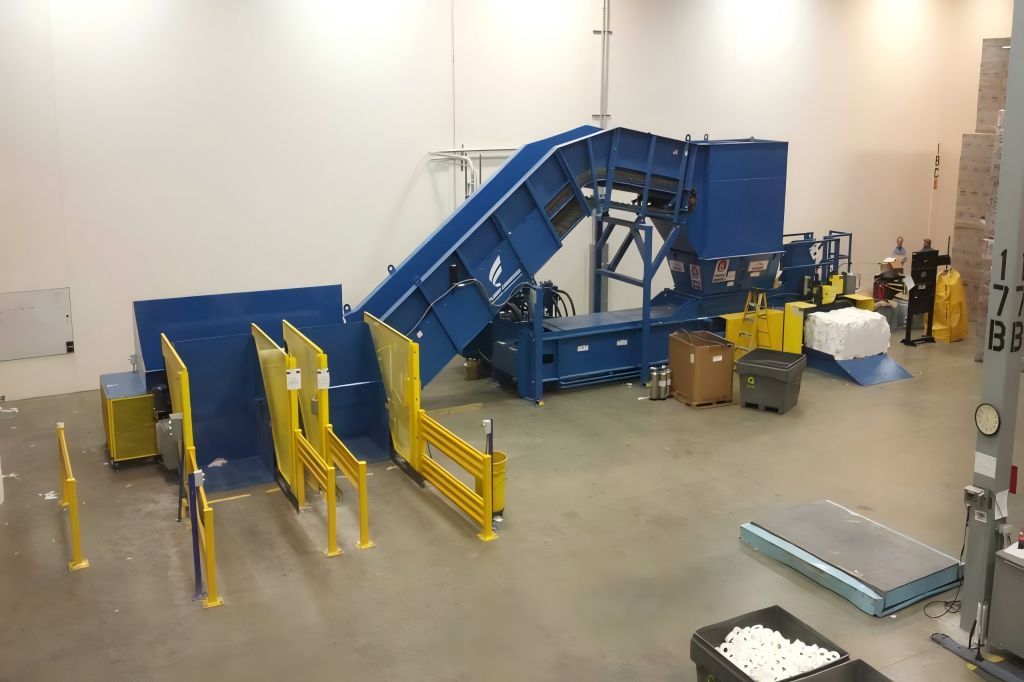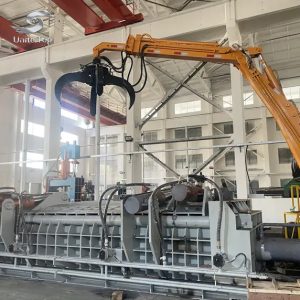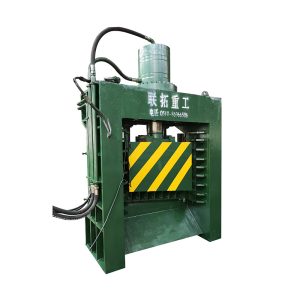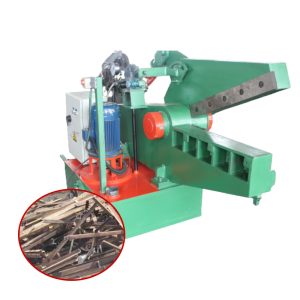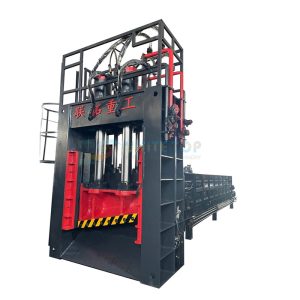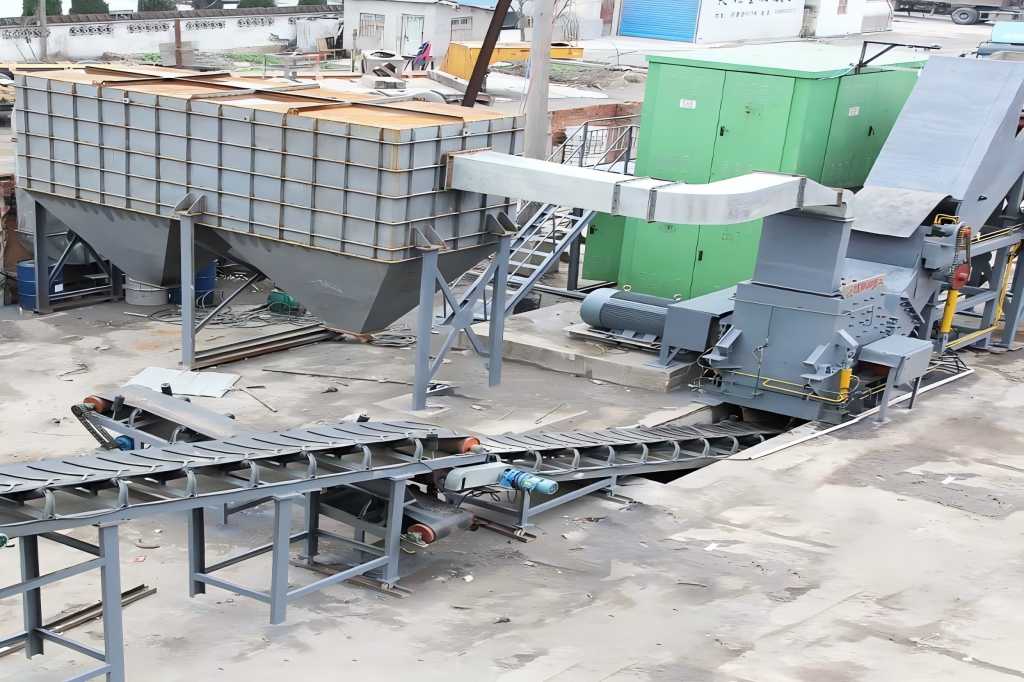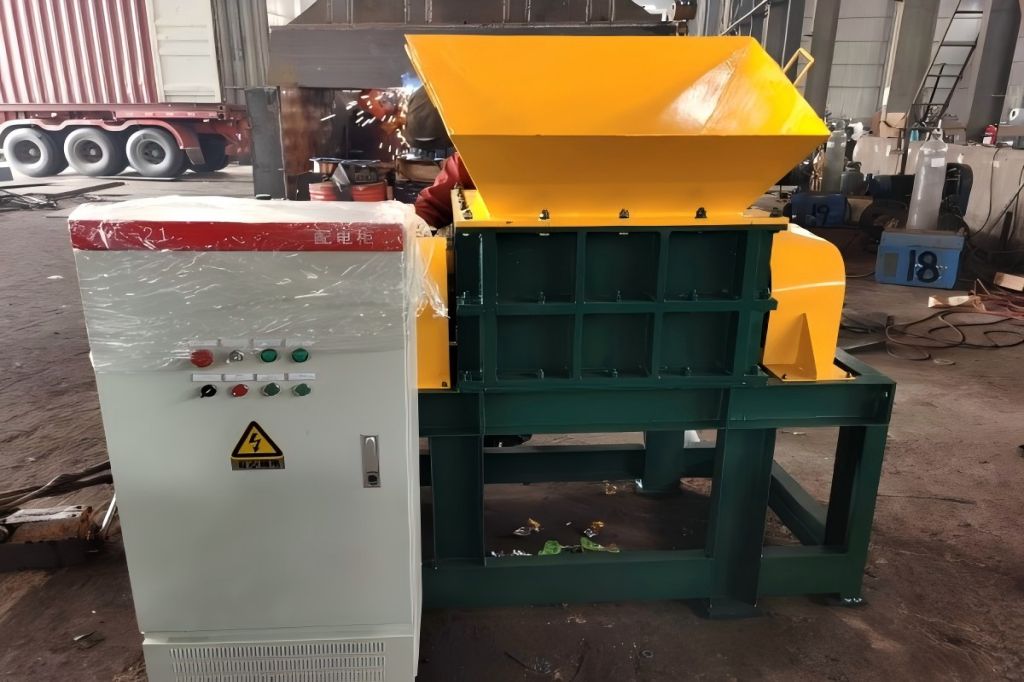Choosing the right baler is key to improving efficiency, cost-effectiveness, and sustainability in waste management and recycling. Balers compact materials like cardboard, paper, plastics, and metals into manageable bales for easier storage, transport, and recycling.
This guide will explore the different types of balers and factors to consider when selecting the best one for your business.
Understanding Balers
A baler compresses and bundles recyclable materials like cardboard, paper, plastics, and metals, reducing waste volume for easier storage, transport, and recycling. It uses significant force to compact materials into tightly bound bales.
Balers vary in size, capacity, and complexity. The choice of baler depends on several factors, including the type of material you’re processing, the volume of waste you generate, and the available space in your facility.
Baler Types
Balers come in a variety of forms, each intended for certain applications and sectors. The most common types will be discussed below:
1. Vertical Balers
Vertical balers are compact machines that operate in a vertical orientation, allowing the operator to load waste materials from the top. These balers are ideal for businesses with limited space and low to medium waste volumes. When space is limited and waste production is moderate, vertical balers are frequently utilized in offices, small warehouses, and retail establishments.
| Advantages | Disadvantages |
| Perfect for companies with a small floor area. | Not suitable for high-volume waste processing. |
| Typically less expensive than larger balers. | Requires operators to manually tie the bales in some models. |
| Simple controls and minimal training are required. | Not suitable for heavy or large materials like scrap metal. |
| Best for businesses with moderate waste generation. | Takes more time compared to horizontal or auto-tie balers. |
| Fits easily into smaller facilities and spaces. | Can process smaller quantities of waste at a time. |
| ability to handle a large range of materials. | Some models require manual bale removal, increasing labor costs. |
2. Horizontal Balers
Horizontal balers are larger machines that operate with a side-loading mechanism. These balers are ideal for high-volume operations, such as manufacturing facilities, recycling centers, and warehouses. Horizontal balers can handle larger quantities of waste and are more efficient at compressing dense materials like plastics, metals, and mixed waste.
| Advantages | Disadvantages |
| Perfect for large-scale operations. | takes up more floor space than balers that are vertical. |
| able to work with steel, plastic, cardboard, and other materials. | Higher initial cost compared to vertical balers. |
| Suitable for larger quantities of waste at once. | More complex to operate and maintain. |
| Efficient for processing heavy or dense materials. | Need more energy to run because of its size. |
| Increased capacity for larger bales, reducing transport costs. | demands a bigger footprint, which may not be suitable for smaller areas. |
| High throughput, which qualifies it for hectic industrial settings. | Necessitates higher maintenance requirements. |
3. Auto-tie Balers
Auto-tie balers come with an automatic system that ties off bales once they are formed. Perfect for companies that need to cut labor expenses and streamline operations because they do not require physical effort. These balers are commonly used in recycling plants, large warehouses, and manufacturing facilities that deal with high volumes of waste.
| Advantages | Disadvantages |
| Automatic tying of bales reduces manual labor. | Higher upfront cost compared to manual-tie balers. |
| Faster bale formation, increasing operational efficiency. | Requires more maintenance due to automation systems. |
| Increases safety by reducing manual handling. | More space required for installation. |
| Suitable for high-volume operations. | Might not be economical for small enterprises. |
| lowers labor expenses while increasing bale quality consistency. | Difficult to use and can call for specific training. |
| Ideal for businesses looking to automate processes. | Higher energy consumption compared to manual systems. |
4. Manual-tie Balers
Manual-tie balers are simpler machines that require operators to tie off the bales by hand once they are compacted. These balers are often used in small-scale operations or businesses that do not need to process large quantities of waste. Manual-tie balers are cost-effective and relatively easy to maintain but may be slower compared to auto-tie models.
| Advantages | Disadvantages |
| Lower cost compared to auto-tie models. | Requires manual labor to tie each bale. |
| Simple operation, easy to maintain. | Slower processing speed compared to auto-tie balers. |
| Ideal for smaller-scale businesses with low to moderate waste volumes. | Labor-intensive, which can increase overall operational costs. |
| Less complex, fewer components to maintain. | Not suitable for high-volume operations. |
| Good for handling lighter materials like cardboard and paper. | Limited capacity for processing large quantities of waste. |
5. Car Balers (Scrap Metal Balers)
Car balers, a type of scrap metal balers, are specialized machines designed to compact vehicles and large metal objects into dense, manageable bales. These balers are commonly used in the automotive and metal recycling industries, where they help process old cars, metal scrap, and other large metal waste.
| Advantages | Disadvantages |
| Heavy-duty design for compressing vehicles and scrap metal. | High initial cost due to specialized construction. |
| Reduces transportation costs by compacting large metal waste. | Requires significant floor space for installation and operation. |
| Increases recycling efficiency by compacting metal into manageable bales. | High energy consumption during operation. |
| Ideal for automotive and metal recycling industries. | Upkeep can be expensive and time-consuming. |
| lessens the need for labor and manual handling. | Large size makes it unsuitable for small businesses or facilities with limited space. |
| Durable and built to handle tough materials. | May require special permits for installation and operation due to its size and nature. |
Industry-Specific Baler Recommendations
Choosing the right baler for your industry is critical to optimizing waste management, improving efficiency, and ensuring sustainability. Here are some industry-specific recommendations for balers:
1. Retail and Commercial Businesses
Recommended Baler: Vertical Balers or Manual-tie Balers
Recyclable materials including cardboard, paper, and plastics are generally produced in moderate quantities by retailers and commercial enterprises. Because they are easy to use and require little floor space, vertical balers are a great choice for small to medium-sized businesses with limited space.
For businesses that generate low to moderate waste volumes, manual-tie balers are also cost-effective and suitable for occasional waste processing.
2. Manufacturing and Industrial Plants
Recommended Baler: Horizontal Balers or Auto-tie Balers
Large amounts of trash, such as scrap metal, plastics, and packaging materials, are produced by manufacturing facilities and other industrial activities. Because horizontal balers have a high throughput and can easily handle vast quantities of materials, they are perfect for these sectors.
Auto-tie balers are appropriate for processing large amounts of waste with little manual involvement since they can also help simplify operations and lower labor expenses.
3. Recycling Centers
Recommended Baler: Horizontal Balers, Auto-tie Balers, or Car Balers
Recycling centers process large volumes of mixed waste, including paper, plastics, metals, and even vehicles. For these operations, horizontal balers are essential for efficiently processing materials like plastics, paper, and aluminum.
Auto-tie balers are also an excellent choice for improving operational efficiency by automating the baling process. Car balers are specifically designed for scrap metal processing and car dismantling, making them a must-have for recycling centers focused on vehicle recycling.
4. Agricultural and Farming Operations
Recommended Baler: Vertical Balers or Manual-tie Balers
Agricultural operations produce large quantities of organic waste such as hay, straw, and plant material. Vertical balers are well-suited for compacting agricultural waste, especially in smaller or medium-sized farms.
For larger volumes, manual-tie balers can also be a good option, depending on the scale of the operation and available labor.
5. Scrap Yards and Metal Recycling Facilities
Recommended Baler: Car Balers or Horizontal Balers
For scrap yards and metal recycling facilities, car balers are the go-to solution for processing vehicles and large metal scrap into compact bales. Scrap automobiles and metal pieces are among the challenging items that these powerful machines are made to handle.
Horizontal balers can also be used for non-vehicle metal scrap, ensuring efficient compression and transport of metal bales.
Considerations for Your Industry When Selecting a Baler
A number of variables, such as the kind of material being processed, the amount of waste being handled, the amount of space available, and your long-term operational objectives, will influence your choice of baler.
1. Material Type
Balers of many kinds are needed for various materials. As an example:
- Cardboard: Vertical balers are ideal for smaller volumes, while horizontal balers are better suited for higher volumes of cardboard.
- Plastic: Plastics, especially those in the form of film or bottles, require more pressure and specialized balers, such as auto-tie balers.
- Metal: Metals, including car parts and scrap metal, need heavy-duty balers designed to withstand high force, like car balers.
- Paper: Paper waste can be baled using both vertical and horizontal balers, depending on the volume.
2. Waste Volume
The kind of baler you want is mostly determined by the volume of waste your company produces. High-volume waste generators, such as large manufacturing plants, will need a high-capacity horizontal or auto-tie baler. On the other hand, smaller businesses that generate lower volumes of waste may find a vertical or manual-tie baler to be more suitable.
3. Space Available
Space limitations are still another crucial factor. While horizontal balers take up more space but have a higher output, vertical balers are small and perfect for companies with limited space. Because of its automated mechanisms, auto-tie balers usually take up more room to install and maintain.
4. Labor Efficiency
Automation can help reduce labor costs, particularly in larger operations. Auto-tie balers and horizontal balers with automatic systems can increase efficiency by eliminating the need for manual bale tying and reducing downtime. If labor costs are a significant concern, investing in an auto-tie baler might be the best option.
5. Maintenance and Reliability
Like any industrial equipment, balers require regular maintenance. Manual-tie balers generally require less maintenance than auto-tie balers, but they may be slower and more labor-intensive. Ensure that the baler you choose has good support from the manufacturer and is backed by reliable service.
Conclusion
Choosing the right baler depends on factors like waste volume, material type, space, and budget. Understanding the pros and cons of each baler type helps optimize waste management, streamline operations, and reduce costs. Assess your needs, consult experts, and select the right baler to improve efficiency, safety, and sustainability.

